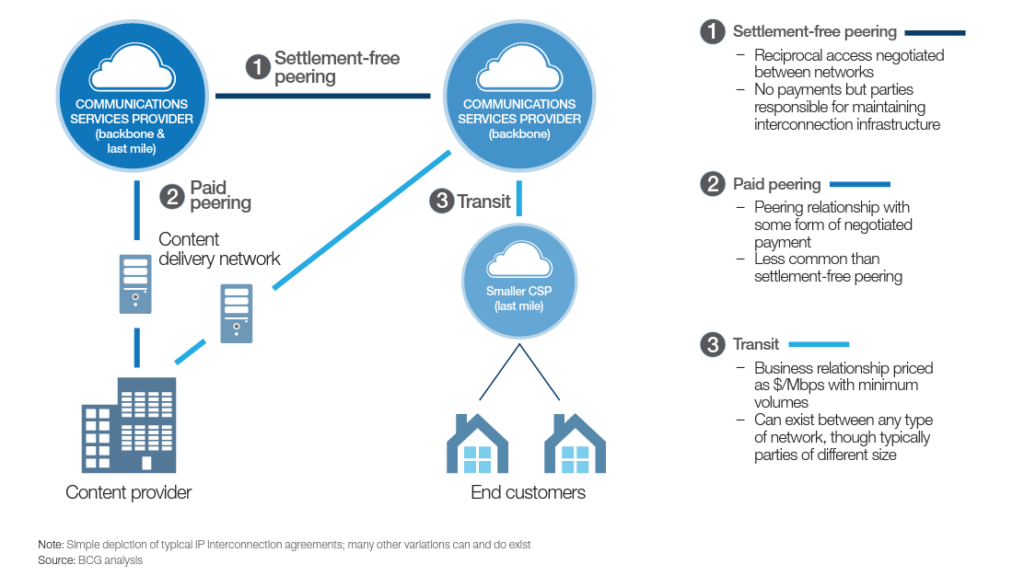If you’re a regular on the Heartland Technology blog, you already know that we are constantly working on improving our data center, our security, our network—pretty much anything that goes into the services we provide.
The biggest news as of late for us—and for you, our clients—is that Heartland Technology upgraded to tier 1 peering. Why does this matter to you as much as it does to us?
We’ll explain below. But first, a quick primer on what tier means in a networking context.
Tier 1, Tier 2, Tier 3 Service Providers—What’s the Difference?
We typically assume tiered approaches depict a difference in quality and that one tier is better than the other. For example, the Heartland Technology data center is a Tier 3 data center with Tier 4 power. In that case, Tiers 3 and 4 are measurably better than Tiers 1 and 2.
This is not exactly the case with tiers in networking, however, where the ecosystem needs all three tiers as they each serve different purposes. Here’s a high-level overview of the tier structure.

Image source: World Economic Forum Report: Delivering Digital Infrastructure—Advancing the Internet Economy
A Tier 3 network usually doesn’t have any transit customers or peering relationships. They usually buy transit internet connection from Tier 2 or even Tier 1 service providers (through DIA or Direct Access) and they rely on borrowed fiber. They sell mainly to end customers and essentially act as resellers.
A Tier 2 service provider is larger and typically sells to Tier 3 networks. They own the cables and other hardware on a path, but they are not large enough to cover the entire globe. Since they still need a larger network to allow signals to reach anywhere on Earth, they buy transit from Tier 1 Service providers.
A Tier 1 service provider is the largest ISP—geographically but not always in terms of number of clients served. Tier 1 ISPs own intercontinental cables and they can connect the other providers with each other. In a way, this is what fuels the global internet and the fact that we can all access the same websites from anywhere in the world.
Tier 1 Peering Benefits
If you work directly with a Tier 1 peering provider, you will have less latency—the networking term for delay. Each new tier, as well as within tiers, adds a “hop,” which is when you’re passed from one network segment to the next. Each hop translates into extra latency, so the closer you are to the “source,” the better your latency.
Similarly, since Tier 1 ISPs have complete control over their infrastructure, DDoS mitigation and route changes are much easier, which means that your data is more secure.
There are currently less than 20 Tier 1 ISPs in the whole world, and Heartland Technology partners with several of them!
This statement alone gives you insight into why we are so proud of the changes to our network. But now let’s see exactly what that means for you.
Working with a Fiber Internet Provider That Cares About Its Network
We made this change to work with Tier 1 networks because we care about the quality, reliability, and speed of our Heartland Technology network. We wanted to improve fiber for all of our customers, both business clients as well as residents of Jesup.
Here’s how these changes benefit those on the Heartland Technology network.
Fewer and Shorter Mass Outages
Heartland Technology uses multiple paths, with redundancies, to connect users to the internet. If a fiber line gets cut during a construction project, for instance, you will simply be switched to another route while the cut line can be fixed.
This means fewer mass outages (which are already very rare) and shorter outages in general.
Moreover, we now work with multiple failover protocols, which helps us notice sooner when one path goes down—often before our clients and customers do. While the down path is being worked on, traffic can be directed through other paths.
For you, this means a steady, reliable connection with fewer interruptions and better speeds.
Full Bandwidth Instead of Bandwidth Throttling
Many ISPs throttle your bandwidth—in other words, they reduce your internet speed intentionally. There are legitimate reasons for this, of course, like avoiding network congestion.
However, throttling also happens for no legitimate reasons—ISPs will reduce your speed based on your activity or when they detect anomalies. At Heartland Technology, we believe it’s not up to us to decide when you should benefit from better speed and when you can do without it.
So all our clients on unlimited plans get full bandwidth. If you’re on our Fiber 250 plan, you get 250 MBPS. We can offer this option because we buy enough bandwidth to cover everything we sell, instead of doing over subscription like other ISPs. We use state-of-the-art enterprise hardware that can easily handle speed, diagnosis, and troubleshooting, even remotely.
One Point of Contact for Everything
Since we manage our network so closely while working with Tier 1 networks, you get the best of both worlds. You work with us and our friendly customer support team while getting access to the best internet access available.
Even though we have stellar customer service, you’ll rarely have reasons to contact us with connectivity issues.
Want to know more about how Heartland Technology reworking our network and working with Tier 1 networks can help you get better services—for Jesup residents as well as for Jesup and Waterloo businesses? Get in touch with us, we’re happy to answer any question you may have.